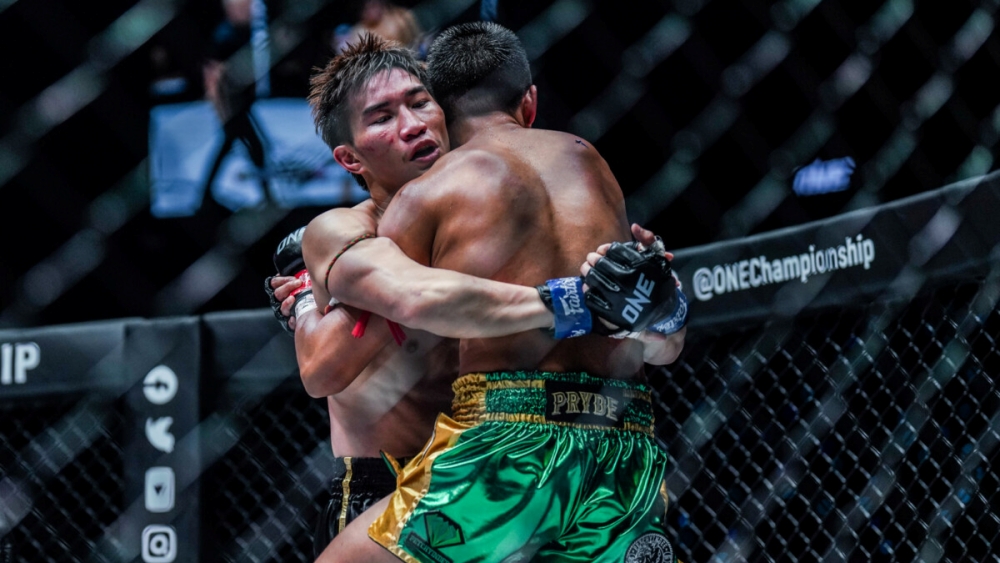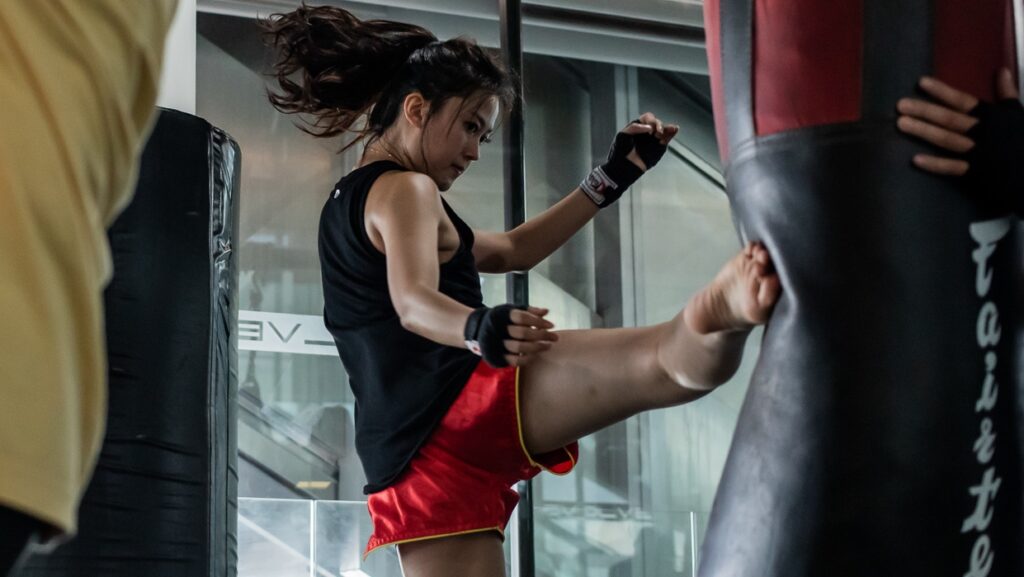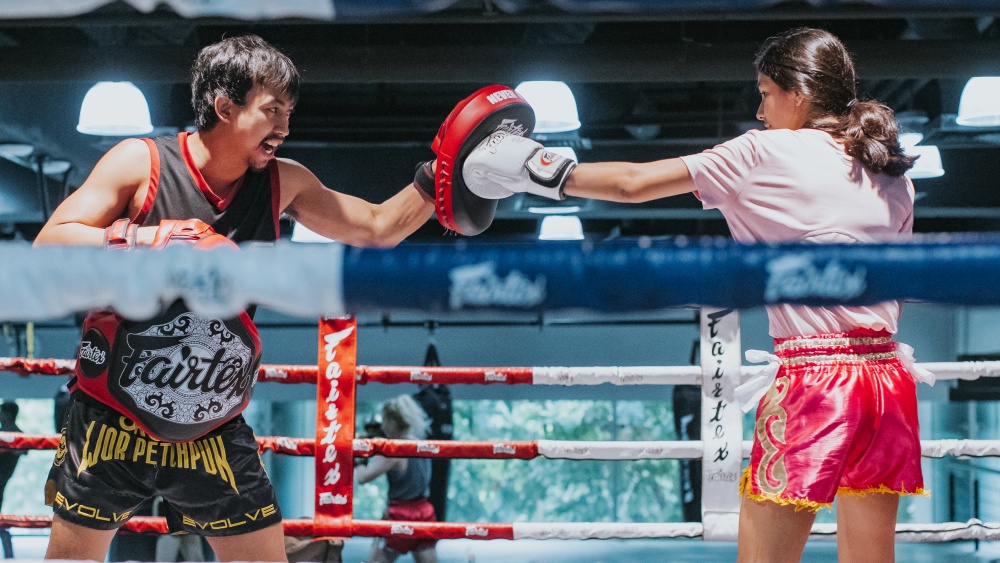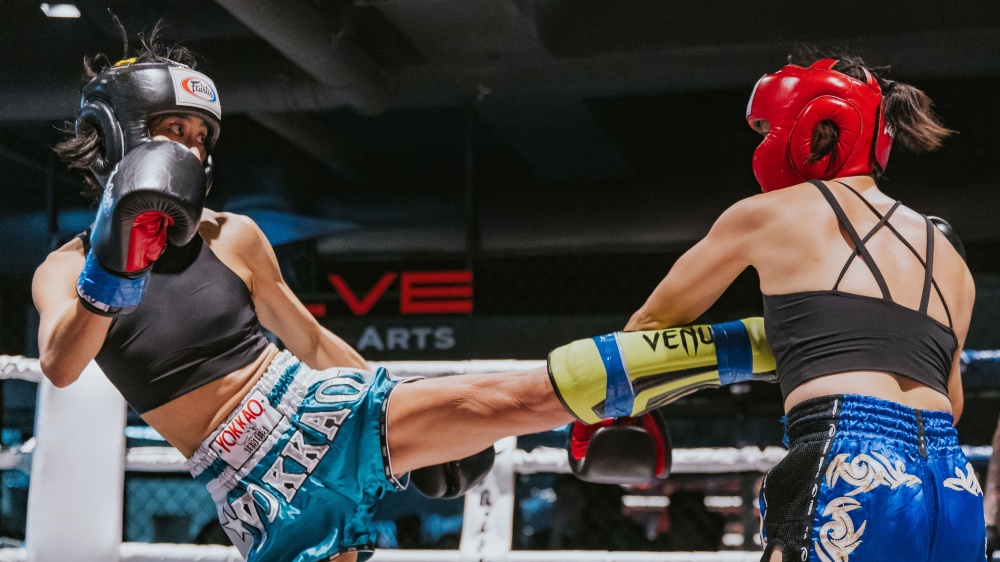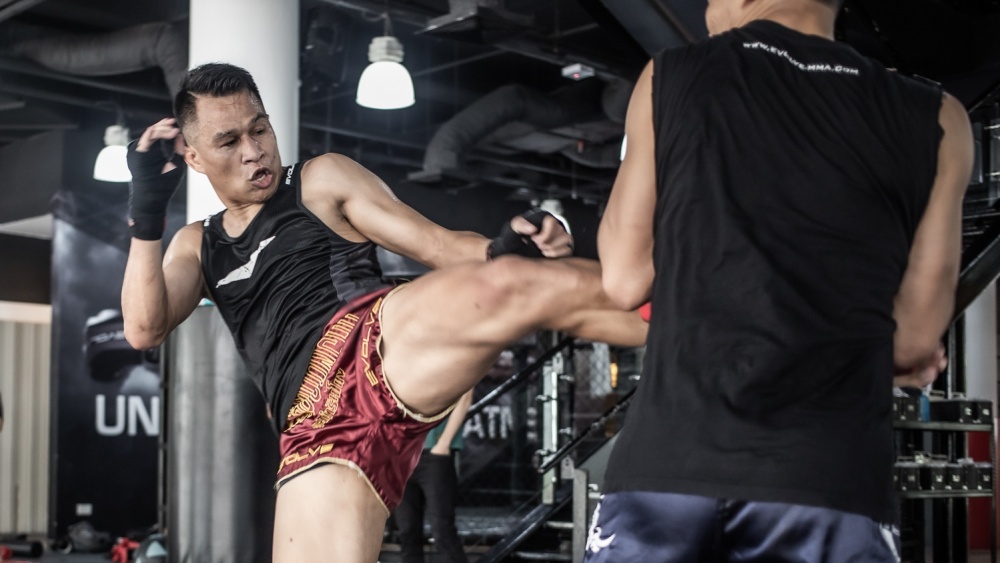In Muay Thai, each practitioner has their own style. Many fighters like to utilize heavy pressure and play at a close range, while many other fighters prefer fighting on the outside, utilizing their kicks primarily over their punches and elbows. Regardless of where you like to fight – on the inside or outside – it’s important to learn how to gauge your range and manage your distance in order to be successful on the mats.
A skilled fighter is able to keep their opponent right where they want them. If you cannot manage the distance, you might end up fighting at your opponent’s preferred range instead of your own. As such, here are five ways to gauge range and manage your distance in Muay Thai.
How To Gauge Range And Manage Distance In Muay Thai
1) Know Yourself
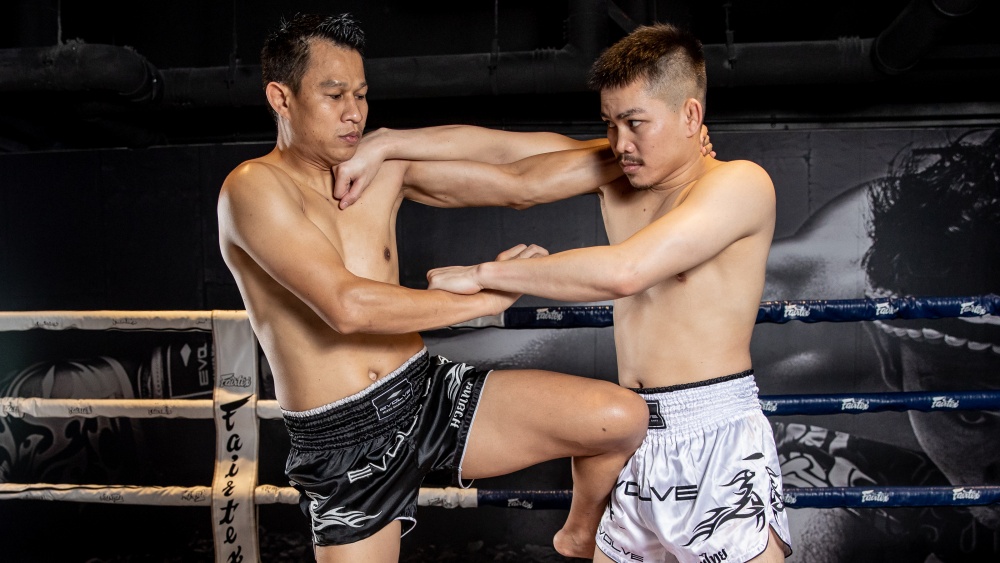
It might sound simple, but it’s incredibly important to recognize your own body type, as well as your preferred range. A tall, long-legged and long-armed fighter is going to manage his distance a bit differently than a shorter fighter with shorter arms and legs. Know yourself, your preferred distance (do you like to stay on the inside or outside?), and your strengths (do you gravitate more towards boxing or kicking?). From there, you can begin to identify the best ways for you to manage the distance.
2) Use Teeps To Keep Range
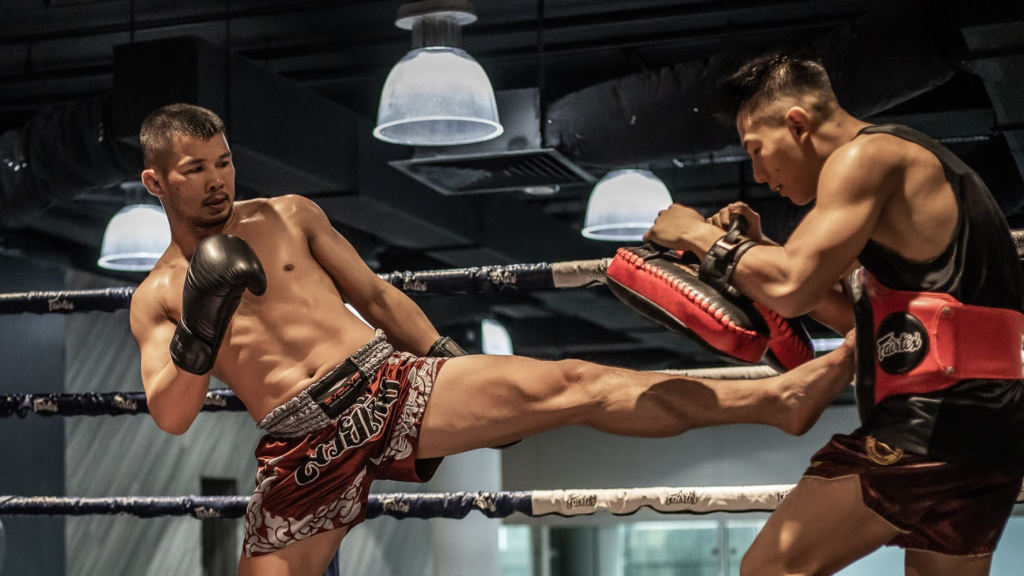
Teeps are incredible for managing your distance, especially if you like to fight on the outside or a bit further away from your opponent. If you are dealing with a heavy-pressure fighter, teeps are going to slow your opponent down and back them up, giving you more distance to play with. Landing a strong teep will give you the space you need to counter with your own strikes at a distance of your own choosing.
Rather than letting your opponent dictate the range by their heavy pressure, your teeps will give you time and space to dictate the range on your own terms. From here, stay on the offensive to continue controlling the range.
3) Use Jabs To Gather Data On Your Opponent
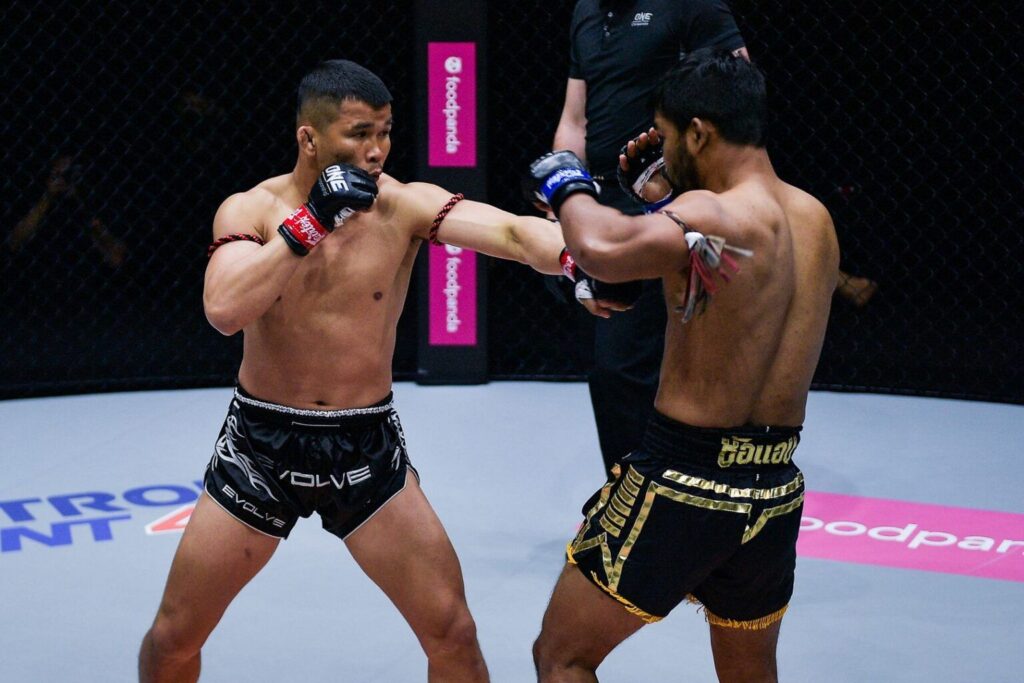
Jabs are an excellent tool for learning about your opponent and gauging the range. Throw a jab and see how your opponent responds. Do they respond the same way every time? Do they back up when you throw the jab, giving you extra distance? Do they slip and move closer, cutting your distance in half? Further, does your jab reach your opponent, or are they further away? Use the jab to get a good read on your opponent.
Once you’ve used your jab to collect data, you can continue using your jab to create space and manage your distance. Try using a double, or even a triple jab to back your opponent up, or even to back your opponent up while also cutting an angle on them. It’s difficult to move through a heavily jabbing hand. Keep that in mind when using it to keep your opponent at a range that you desire.
4) Use Counters To Your Advantage
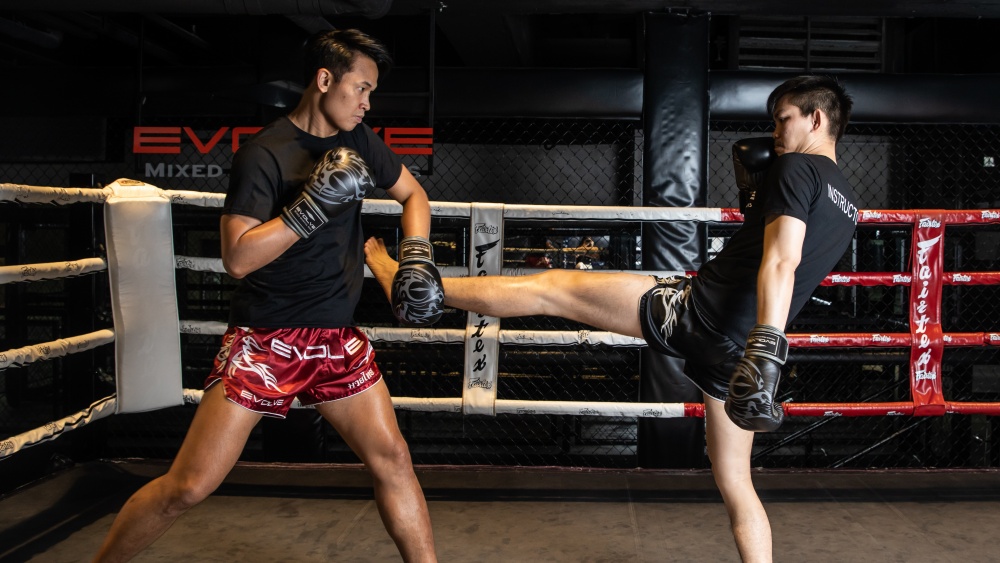
A match always has two fighters. While it’s great to think you’ll dominate all of the action, the reality is that your opponent will also be trying to actively do the same. You will need to defend and counter your opponent’s attempts to control you and the distance on their own terms.
As you defend against strikes, immediately look to find your counters and how they can be used to your advantage to create the range you want. Defending a kick with a check and then countering with an immediate teep is going to give you some long range.
On the flip side, parrying a punch and moving to the inside with an uppercut will get you to a closer, inside range where you can snatch up the clinch, if that is more of your preference and desired range. Don’t just counter for the sake of countering, counter with the intention of setting yourself up for your best and most desired range for fighting.
5) Use Footwork And Angles
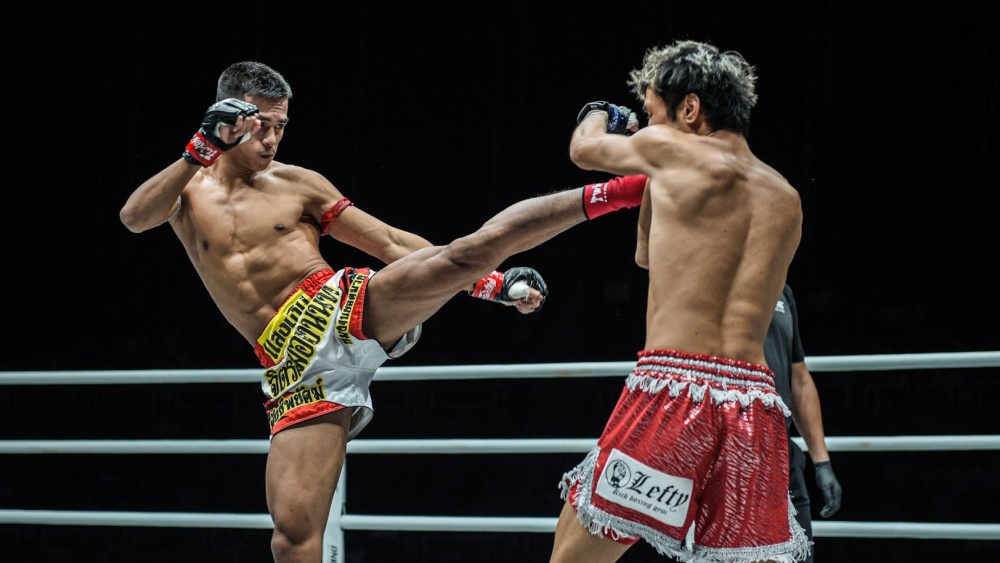
Footwork and angles go hand in hand. Using them to maintain (or find) your desired range will help you to land strikes and begin controlling your opponent. Whether you are responding to a strike from your opponent or moving in or out of range while throwing your own strikes, good footwork and angles will help you to find the best, most dominant spot possible for fighting.
Defend and counter your opponent’s strikes with heavy strikes of your own alongside good footwork. This will usually lend towards a positive angle on your opponent, giving you even more opportunities for strikes and managing the distance.
If you are able to constantly find a better angle on your opponent by utilizing your footwork, you will be able to manage the distance with much more ease. Set yourself up for success by using your footwork and angles on your opponent to manage the range.
Gauging The Range And Managing The Distance Is Key In Muay Thai
No matter your fighting style, gauging the range and managing the distance is going to be a key part of your Muay Thai success. If you cannot adequately manage the distance, chances are that you will end up fighting at the preferred range of your opponent, rather than your own. Fighting at your opponent’s preferred range will limit your ability to throw the strikes you prefer in the way you prefer to throw them.
Whether you like to fight at a close range utilizing your punches, elbows, clinch, and knees, or you prefer to be a long-range fighter that relies heavily on your kicking, teeps, and even sweeps, you need to dial in your techniques for managing the range.
By knowing yourself and your preferred range and strikes, using teeps to keep the distance, and jabs to read your opponent, you will be off to a much better start as you step into the ring. Add in your footwork and angles, as well as using your counter strikes to your advantage, and you will be well on your way to managing the distance and being able to gauge the range in Muay Thai.
If you would like to learn more on dominating your opponent in both close and long range, consider purchasing Evolve University’s Close And Long Range Dominance. Renowned for his technical mastery and fight IQ, multiple-time Muay Thai World Champion Penaek Sitnumnoi breaks down his fighting style in this online Master Course, revealing how he combines his signature long guard, long knee strikes, and expertise in the clinch.
You may also like:

